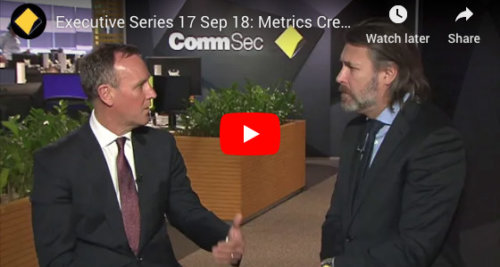Potential opportunities for investors for enhanced yields on income-focused investments
ASX-listed debt trusts are trading at material discounts to the value of their underlying assets, which presents potential opportunities for investors to derive enhanced yields on these income-focused investments.
Having sprung up like mushrooms after a thunderstorm over the past five years, these so-called credit-focused listed investment trust (LITs) vehicles offer investors a listed exposure to trillion-dollar credit markets, which until very recently had been the preserve of institutions and sophisticated investors.
The LITs have diminished the default risks by investing in hundreds of companies across industries and regions, with a mix of publicly traded and so-called private debt (company loans outside of the banking sector).
Being listed, the LITs are easily tradeable, which is usually not the case with the underlying investments.
Investors receive a monthly distribution, usually at a floating rate based on a margin above a benchmark rate, such as the Reserve Bank’s cash rate.
If all goes well, the fund will recoup the capital amount on maturity.
The promoters also stress that when a borrower does run into trouble, debt holders rank further up the payments chain than shareholders (who typically receive nothing in a liquidation or receivership scenario).
However, the listed performance of the trusts since the coronavirus sell-off shows that investors are still worried about the prospect of defaults when the various global stimulus and support measures wear off.
At the time of writing, the eight LITs were trading at discounts of up to 10 per cent to their stated net tangible assets (NTA) per share.
Mind you, at the peak of the COVID sell-off in March, the discounts were between 31 per cent and 39 per cent.
But let’s face it, we all thought the world would fall apart then.
The LITs include the Partners Group Global Income Fund (PGG), which listed last September and global investment behemoth Kohlberg Kravis Roberts’ KKR Credit Income Fund (KKC), which debuted last December having raised a meaty $925m.
Trailblazer Metrics Credit Partners launched the first credit-focused LIT, the MCP Master Income Trust (MXT) in December 2017.
In April it followed up with the MCP Income Opportunities Trust (MOT), which raised $300m in an oversubscribed issue.
The chairman of the Listed investment Companies and Trusts Association, Angus Gluskie, says the LITs are not immune from general market sell-offs, while other income securities (such as hybrids) are also trading at a discount.
“In the listed market you will always have liquidity so you can sell at any time,” he says.
The bottom line is that discounts create opportunities, with new investors eyeing running yields of 10 per cent or more.
The big proviso, of course, is that the funds are as prudently managed as they claim and don’t incur a bad debt bath.
And with so many enterprises on government life support, this is yet to be tested in earnest.
Metrics Credit Partners contends that by moving up the risk curve “just slightly”, it can provide investors with consistent and stable income.
The MCP Income Opportunities Trust targets a total return “through the cycle” of 8-10 per cent.
MCP managing partner Andrew Lockhart says the firm’s funds have no exposure to vulnerable sectors such as retail, student accommodation, education, tourism and retail property.
The funds are also highly liquid, so there is no looming forced selling scenario.
“The companies we lend to are fundamentally sound and have a business model that is not broken,” he says.
Other popular LITs are the Neuberger Berman’s NB Global Corporate income Trust (NBI), the Perpetual Credit Income Trust (PCI) and the Gryphon Capital income Trust (GCI).
The Neuberger Berman trust aims to hold paper in 250 to 350 companies globally, diversified by industry, country and credit quality.
These include non-investment grade bonds issued by large and liquid global companies.
The Perpetual Credit Income Trust, which listed in May last year, invests in both domestic and global credit and fixed income, including corporate bonds, floating rate notes, securitised assets and private debt.
Both the MCP Master Income Trust and the Perpetual Credit Income Trust strive for a return of the RBA cash rate (currently 0.25 per cent) plus a 3.25 per cent margin.
The KKC fund, by the way, is trading at the widest discount of around 10 per cent, while investors who subscribed in the listing are 15 per cent under water.
A ‘’fund of funds’’, KKR invests in two KKR vehicles: the KKR Global Credit Opportunities Fund and the European Direct Lending fund.
KKR describes the flagship Opportunities Fund as a “high conviction, value-oriented” venture investing in sub-investment grade markets. The European fund lends to mid-sized companies with underlying profits of $80m-160m.
In contrast, the MCP Master Income Trust is trading at a humble 1 per cent discount to both its NTA and listing price.
In theory, the NTA discounts will narrow if and when investors become convinced that the funds will recoup the full value of their paper at maturity.
But as long time watchers of the wider listed investment trust sector would know, some funds trade at a perennial discount.
THE AUSTRALIAN – 28 September 2020
Other News
Podcast: The Rules of Investing | From Cold Call to Capital Giant
In this episode of The Rules of Investing, Metrics Group CEO & Managing Partner, Andrew Lockhart discusses the conditions that…
Metrics Credit Partners Completes Acquisition of Taurus and BC Invest
Metrics Credit Partners (“Metrics”), a leading Australian based alternative asset management firm, has today successfully completed the acquisition of Taurus…
INSIGHTS
MCP Income Opportunities Trust (MOT) lists on ASX
Sydney, 29 April 2019: The Trust Company (RE Services) Limited (ABN 45 003 278 831) (Responsible Entity) is the responsible…
MCP Master Income Trust wins Lonsec Listed Fund Award
The award came a year after MXT was listed on the Australian Securities Exchange






